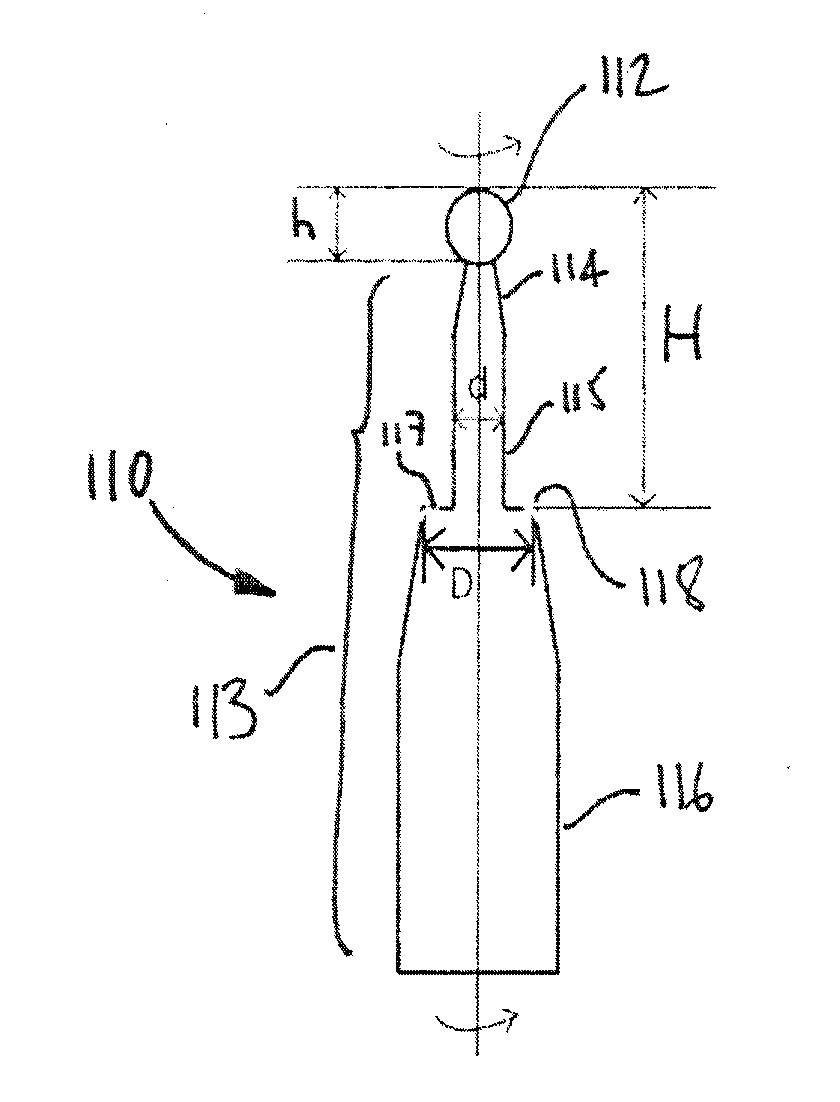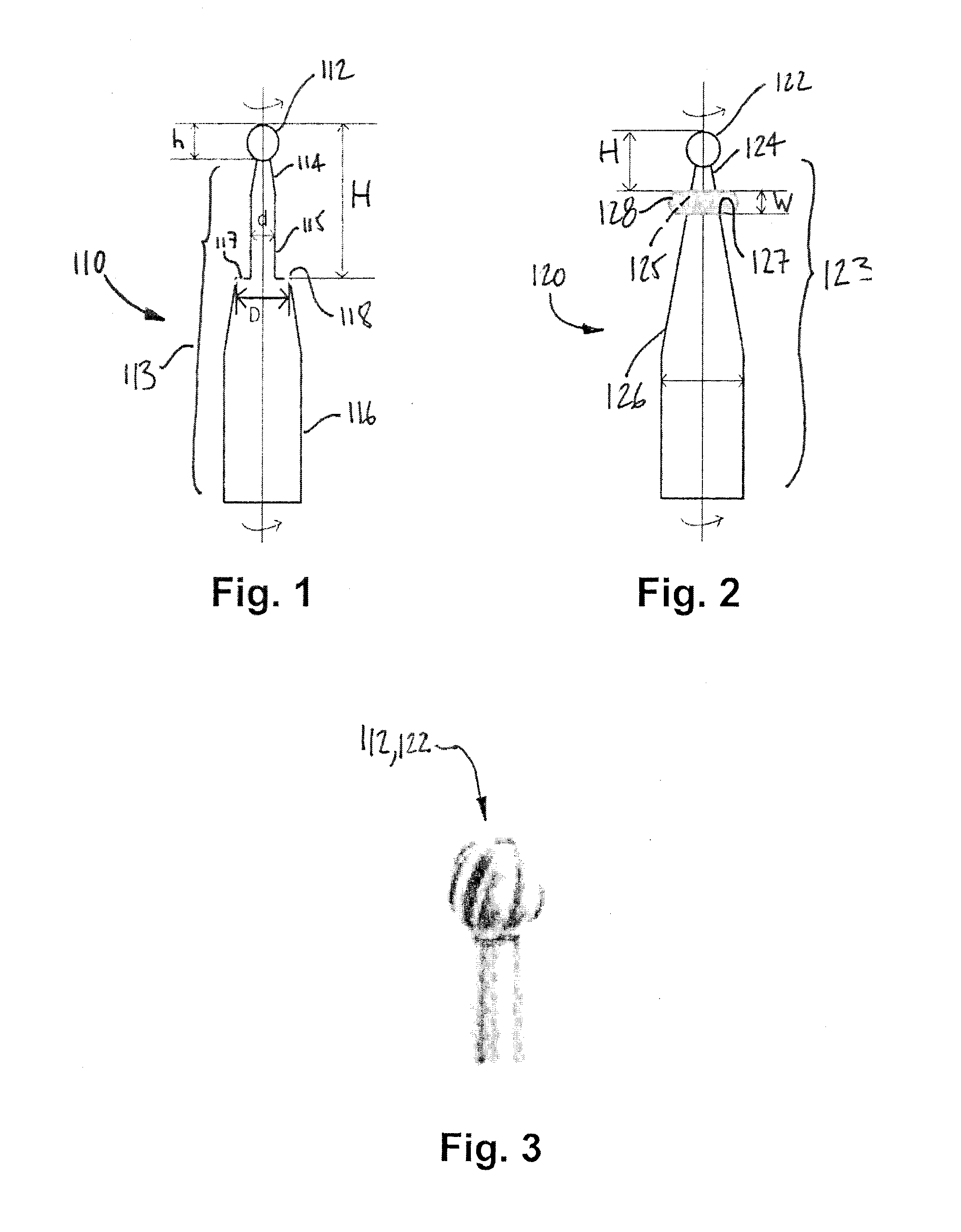Drill burr and method for performing holes in subchondral bone to promote cartilage repair
a cartilage repair and subchondral bone technology, applied in the field of cartilage repair, can solve the problems of little scientific evidence to guide the proper implementation of microfracture, the general lack of understanding of the mechanisms and parameters that control the success versus failure of bone-marrow repair, and the failure of some patients to achieve the effect of microfractur
- Summary
- Abstract
- Description
- Claims
- Application Information
AI Technical Summary
Benefits of technology
Problems solved by technology
Method used
Image
Examples
Embodiment Construction
[0032]Referring to FIG. 1, a drill burr in accordance with a first embodiment is generally shown at 110. The drill burr 110 is used to drill holes through cartilage zones and calcified cartilage so as to reach the subchondral bone, to promote bone marrow stimulation for cartilage repair.
[0033]The drill burr 110 has a drilling head 112. As an example, the drilling head 112 has a diameter “h” of approximately 0.9 mm, and is shown in greater detail in FIG. 3.
[0034]The drilling head 112 is connected to the drill by way of a neck 113. The neck 113 has, amongst other parts, a frustoconical portion 114, a cylindrical portion 115, and a connector portion 116. The frusto-conical portion 114 is connected to the drilling head 112. The frustoconical portion 114 provides an irrigation space during drilling to avoid overheating the periphery of the hole, so as to reduce the risk of cell necrosis. Other configurations are considered in the neck 113 to provide irrigation during drilling.
[0035]The c...
PUM
 Login to View More
Login to View More Abstract
Description
Claims
Application Information
 Login to View More
Login to View More - R&D
- Intellectual Property
- Life Sciences
- Materials
- Tech Scout
- Unparalleled Data Quality
- Higher Quality Content
- 60% Fewer Hallucinations
Browse by: Latest US Patents, China's latest patents, Technical Efficacy Thesaurus, Application Domain, Technology Topic, Popular Technical Reports.
© 2025 PatSnap. All rights reserved.Legal|Privacy policy|Modern Slavery Act Transparency Statement|Sitemap|About US| Contact US: help@patsnap.com


